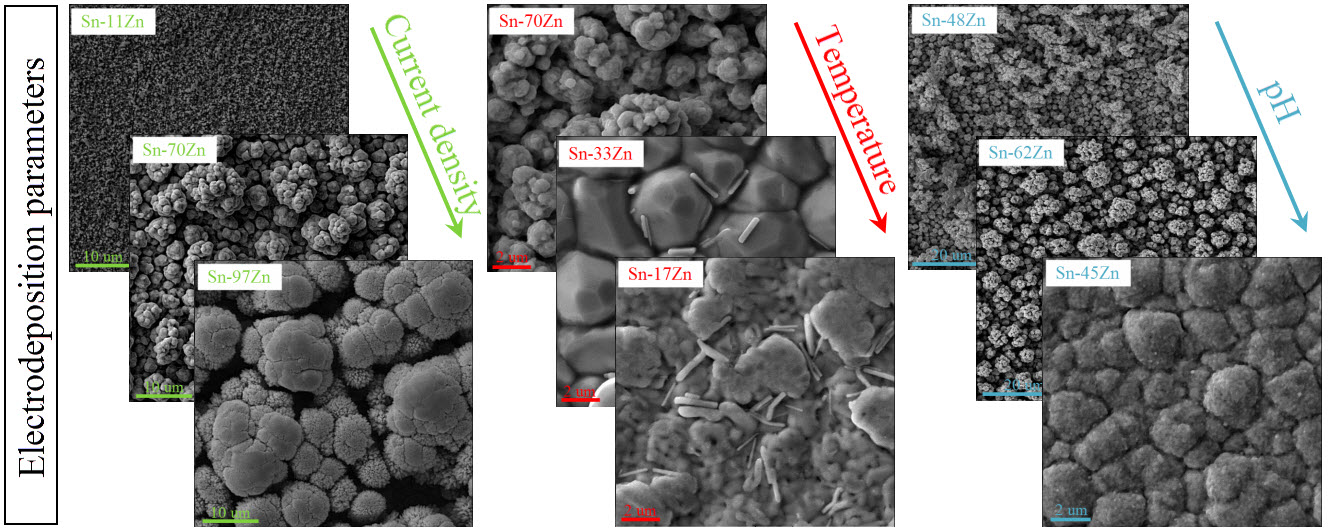BibTeX | RIS | EndNote | Medlars | ProCite | Reference Manager | RefWorks
Send citation to:
URL: http://ijmse.iust.ac.ir/article-1-989-en.html
Tin-Zinc alloy coatings have many applications because of their unique properties such as corrosion resistance, solderability and flexibility. In this study, the effect of current density, temperature and pH on chemical composition, cathodic current efficiency, morphology and structures of the coatings was investigated. The results illustrated that, at low current densities (<0.5 mA/cm2), the coatings were relatively pure tin, but Zn content increased with enhancing the current density. At higher currents a relatively pure Zn film was obtained. Temperature and pH also affected chemical composition of the alloy films. Zn content of the coatings was decreased by increasing the temperature, while its variation with pH had ascending-descending trend. Morphological investigation of the coatings revealed that increasing Zn content of deposits led to porous, rough and fine grained films.
| Rights and permissions | |
 |
This work is licensed under a Creative Commons Attribution-NonCommercial 4.0 International License. |







